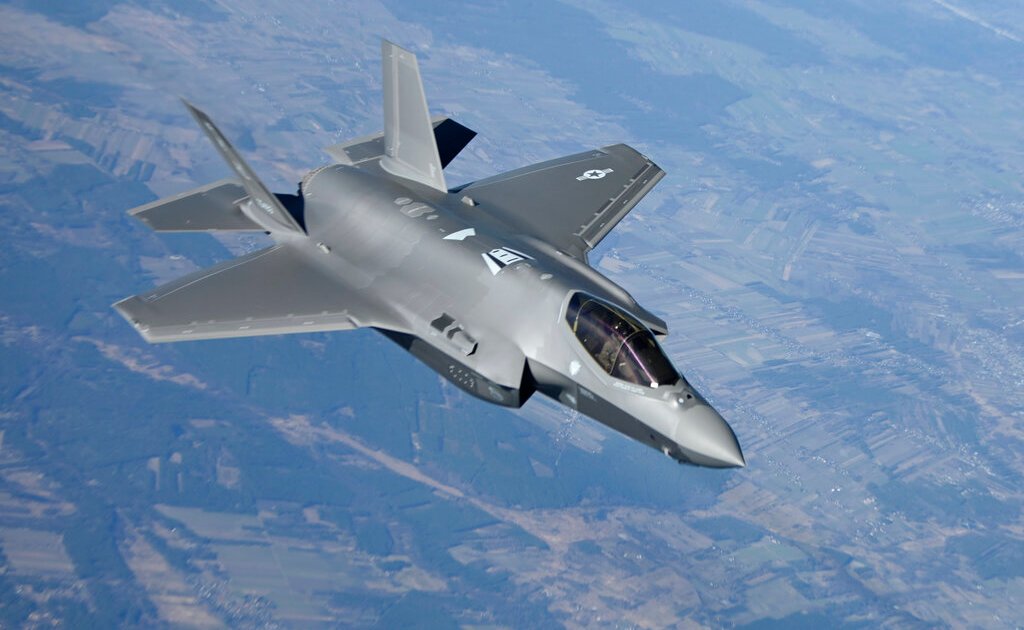[ad_1]
What’s in a Karate Uniform?
If you’re going to be doing karate for a long time, a good quality Gi is a good investment. However how do you define “good quality”? There are a surprising number of variables when choosing a karate uniform which can affect whether if it right for you. Most of them the average person probably won’t think twice about – there’s nothing wrong with going to the nearest sports shop, finding the right one for your height and wearing it for a while to see how it feels, but if you want one to last a while which you enjoy wearing, it’s worth weighing a few things up.
Terms Gi, karategi, karatedogi or uniform may be used. Dogi refers to Gis in general and not necessarily those used exclusively for karate.
Sizing
The most basic aspect of Gi sizing is the height in cm (used for European Gis), though sizing is also dependent on weight and other varying dimensions. Gis in Japan are given a number instead of a height measurement; the numbers correspond to the approximate heights shown in the table below. These numbers may be important if ordering from a Japanese source. Note these sizes also depend on the manufacturer! Care must also be taken because the Gi can shrink, particularly after hot or repeated washing, and Gis from different manufacturers shrink to different extents. It is common to buy a slightly oversized Gi to allow for shrinkage. Shureido give the size after shrinkage because they shrink the material themselves to make sizing easier for the customer, although there may still be a small percentage of additional shrinkage. It is worth checking whether the manufacturer’s size refers to pre- or post- shrinkage for that particular Gi and whether anyone else you know, or on the internet, can tell you what degree of shrinkage to expect.
Here is a sample chart showing conversion between the Japanese size and the corresponding approximate height of the individual.
The list below is in the format:
Japanese Gi Size = Suitable for Approximate Height (cm) = Equivalent Height (Feet / Inches)
000 = 110 = 3ft 7ins
00 = 120 = 3ft 11ins
0 = 130 = 4ft 3ins
0.5 = 135 = 4ft 5ins
1 = 140 = 4ft 7ins
1.5 = 145 = 4ft 9ins
2 = 150 = 4ft 11ins
2.5 = 155 = 5ft 1ins
3 = 160 = 5ft 3ins
3.5 = 165 = 5ft 5ins
4 = 170 = 5ft 7ins
4.5 = 175= 5ft 9ins
5 = 180 = 5ft 11ins
5.5 = 185 = 6ft 1ins
6 = 190 = 6ft 3ins
6.5 = 195 = 6ft 5ins
7 = 200 = 6ft 7ins
7.5 = 205 = 6ft 9ins
8 = 210 = 6ft 11ins
For those with non-standard body dimensions, jackets and pants may be purchased separately. Many of the top manufacturers offer size customisation, with many different modifiable dimensions which may be specified upon ordering. For the trousers you may specify length, waist circumference, diameter / circumference at the top and bottom of the leg and the distance between the top of the pants and where they split to the legs. For the jacket the height, length of the arms, length of the central part of the jacket and the circumference / diameter of the arm piece near the shoulder and wrists may be varied. Customisation obviously adds to the cost of the Gi.
Material
Cheaper Gis often use cheap polyester / cotton blends. More expensive Gis are manufactured from traditional pure cotton which is more likely to shrink in the wash and more likely to crease than a cheap blended material but absorbs more sweat is stiffer, holding away from the body so as to be more breathable. Some Gis use brushed cotton for softness / comfort. There are high-end polyester cotton blends such as the Shureido New-Wave line of Gis designed to give the positive properties of both – less need for ironing, less shrinkage, wicks away sweat as it is absorbent and breathes well due to holding itself away from the body.
Weight
The weight of a Gi is given in either in ounces or as a number of the canvas “numbered duck” (it is more common to use this in Japan and will be encountered if ordering from a Japanese manufacturer). “Canvas” and “duck” are often used interchangeably; “duck” is derived from the Dutch “doek” referring to a canvas used for sailors’ clothing.
The use of ounces as a weight indicator stems from industry weights given to duck cotton. It refers to the weight of the cloth per square yard and does not indicate as much about the quality of the material as the duck number. A 10 ounce canvas is not the same as a #10 canvas. When the rating is given in ounces it normally refers to “single fill” canvas – single fibres used in the threads of the horizontal axis of the weave, which are thicker fibres than those used in a #10 canvas.
A Gi often has duck #10 or #11 (though in the industry #11 is rarely used nowadays). To understand what the numbers mean requires detailed explanation. If a piece of cloth measuring 36 inches x 22 inches weighs less than 19 ounces it is called numbered duck. The duck number is calculated by subtracting the weight of the 36 x 22 inch piece, in ounces, from 19. Hence the numbers are inversely proportional to the weight – a heavier piece of cloth has a lower number.
In addition to the weight of cloth per square yard, the numbers are also indicative of the likely thread count of that piece of material (more threads in the “warp” or vertical axis of the cloth and more threads in the “fill” or horizontal axis of the cloth). The thread count is the number of threads used per square inch – higher numbered canvasses have a higher thread count – more and finer threads per square inch which because the threads are closer together, means you are less likely to feel them against the skin – increasing the comfort, suppleness and durability of the material. The greater thread count is achieved by using finer fibres.
Finally the yarn count is also roughly indicated by the canvas number. Yarn count in real terms is the number of threads stretching 840 yards needed to give 1 English lb of weight. For English cotton – if the yarn count is 1 then a thread strand stretching 840 yards would be 1 lb in weight. If the yarn count is 2 then two threads stretching 840 yards would be 1 lb in weight – hence the threads / yarns must be finer; the higher the number, the more fibres stretching 840 yards would be needed to give 1lb weight.
It is an indicator of thickness of single threads. Higher yarn counts indicate finer threads and fewer fibres wound together to form a single thread. Higher canvas numbers have a higher yarn count and thus use finer threads.
Yarn count is quoted as x/y.
X is a number which indicates how fine each fibre of the material is, a higher number means a finer fibre was used.
Y is the number of individual fibres wound / plied together. 2 fibres plied together becomes a single yarn, the yarn would be twice as thick but for 1 lb of the new yarn, you would only need half the length.
Note that the first number, X, refers to the individual fibres in the yarn and not the resultant plied yarn e.g. 100/2 is 2 fibres with yarn count 100 being plied together, resulting in a thread with a 50 count.
Note the unit length (i.e. 840 yards for English cotton) varies for different fibres and spinning systems.
So a higher number means a lighter garment per square yard, a higher thread count and finer threads.
Duck #11 = 8oz for a 36 x 22 inch piece = 13.09oz per square yard, used for some karate Gis
Duck #10 = 9oz for a 36 x 22 inch piece = 14.73 oz per square yard, used for some karate Gis. Other examples of uses of canvas with this duck include tote bags, luggage, shoe uppers and shower curtains.
Lightweight Gis
Perhaps 6oz or 8oz, these are often the least expensive (though not always – the type of material, design etc. also has a bearing – for example the Shureido Mugen-Fighter is a very lightweight and thin Gi used for kumite and is one the most expensive uniforms of the Shureido brand). It is not uncommon to have a number of karate Gis and lightweight ones are often chosen for kumite competition for freedom of movement. Other examples of lightweight high-quality kumite Gis include the Tokaido NST and the Hirota Pinack.
These will not last as long as heavier Gis, the rate of wear being dependent on the amount and content of training – particularly physical contact and grappling. They tear more easily and wear thin from prolonged use.
In terms of warmth, the cheaper polyester / cotton blends which soak up little sweat, and despite the lighter weight can leave you feeling hot, uncomfortable (as the Gi sticks to the body) and dripping with sweat. More expensive Gis are often pure cotton or more advanced polyester / cotton blends which breathe well (i.e. stay away from the body) and allow sweat to evaporate quickly. On the positive side, they are easier to iron and more resistant to creasing than pure cotton.
Cheaper lightweight uniforms are ideal for beginners or those who are unsure how long they will continue with karate; the more expensive ones are suitable for kumite competition.
Medium Weight Gis
Maybe 10oz or 12oz, these are more resistant to use than a lightweight Gi and tend to last longer. Although if worn when standing stationary they would be slightly warmer due to the thicker material, when training they soak up more sweat and can leave you feeling cooler.
Heavyweight Gis
Maybe 14oz, 16oz or even higher, these are often marketed as “Ultimate” karate uniforms (as an example) for the dedicated / serious karateka. They are more expensive and this transparent marketing trick is designed to appeal to vain karate students who subconsciously or otherwise believe that the uniform will make them perform better. That said, a good heavyweight Gi can last a long time and is worth choosing carefully. They absorb a lot of sweat and due to the stiffness of the cloth hold themselves away from the skin over larger areas of the body than lighter weight uniforms – yet their greater power of absorption means that when they do touch the skin, they can “wick away” beads of sweat and absorb them in to the cloth. The downside of heavier uniforms is that they can take longer to dry and are harder to iron; a possible exception is the Shureido ‘New Wave’ range of Gis which advertise ‘no ironing required’ and a fast drying time due to the polyester / cotton blend. Aesthetically these Gis do look very good.
Due to the nature of the canvas, they don’t scrunch as easily as more lightweight Gis and so require more care when transporting them – they take up more room in your bag or require a separate bag altogether! Examples of high quality heavyweight Gis include the Hirota #163, the Tokaido Ultimate (SAW) and the Shureido NW-3.
Some prefer a lighter weight Gi for training and a heavier Gi for more formal occasions such as assessment and competition. In a perfect world a Gi would be versatile and suit both circumstances.
Traditional / Standard Cut vs. Tournament Cut
Traditional cut uniforms have full length sleeves and legs whereas tournament cut uniforms have shorter sleeves and legs, perhaps 80% of full length. The reasoning behind tournament cut is that it is supposedly easier to see the arms make contact with an opponent in kumite, making it easier for the referee to score and more likely that you will score the point; it may also give a greater feeling of freedom to the limbs and it is more difficult for the opponent to grab hold of the Gi. Which cut to choose depends on what you are most likely to use the Gi for.
Drawstrings or Elasticated Waist
Gi pants come with different types of waist fastening. Some are elasticated – which are easier to remove (useful for going to the toilet or dressing / undressing quickly!) but if too tight may affect breathing – though this is debatable; the effect may be insignificant. Some use the more traditional drawstrings which can be adjusted to suit but are more time-consuming to fasten and unfasten; they are less likely to affect breathing, however and can reduce the likelihood of the pants being pulled down, particularly important during grappling / kumite. Some pants have both elastic and drawstring on the waist which means they are time-consuming to fasten and may affect breathing but tightness may be adjusted according to preference. The jacket of the uniform covers the fastening so this will not be visible to others and is simply a matter of preference.
Specific Brands
It would be difficult to dispute that the top 3 brands are Hirota, Shureido and Tokaido (in no particular order). These are the most popular brands, particularly with high level instructors and offer good quality and consistency of manufacture. Other popular brands include Kamikaze (now branded as Tokon in the U.S. and Kaiten in the U.K), Ronin, Century, Blitz and Adidas.
Colour, Markings and Embroidery
The traditional colour is pure white with no markings; white is most widely available. Some white Japanese cottons give a bluish hue / tint to the canvas which lasts varying amounts of time dependent on washing.
Colour and markings are in a certain respect a taste preference, though some clubs favour one colour over another and request that their students wear the same. It does help to fit in to one particular club and can serve as an identifier as with any uniform to indicate that that person is a member of a particular club. It could be said that one should be wary of the importance an instructor places on colour and markings – unusual styles are sometimes synonymous with fake instructors and rare / invented / hybrid styles of karate.
The second most popular colour after white is black, though Gis are available in many different colours and with many different markings; obviously the colour has no bearing on ability.
Embroidery can often be done on request at the time of ordering the Gi; the karateka’s name or the name of their club in Japanese lettering are popular choices. This may also be done independently though it is worth choosing a reputable company to do this as it is quite expensive and will change the appearance of your Gi; Japanese lettering would also be much more difficult to order independently.
Adverts
When a Gi is purchased for a club or competitor by a company, it is common for the company to include some advertising on the Gi. Some may feel this detracts from the appearance of the Gi and is non-traditional, but it does not affect skill and is quite commonplace in competition.
Badges are often worn (which may be sewn on to the Gi) when a karateka is representing a club or organisation.
All manufacturers generally place a small tag somewhere on the outside of the jacket and / or pants – this only serves as advertising when the Gi is viewed up close as it is not normally noticeable nor legible from a distance.
Snap
This is an aesthetic property of a Gi which is unnecessary when karate is viewed as a tool of self defence to be used only when necessary. It appeals to the vanity of some karateka yet it does have some useful purpose; whilst the presence of the snap does not indicate that the technique was performed correctly, often a well executed technique will produce the snap as a result, providing some form of affirmation of success. It is therefore a popular feature of a uniform when performing kata / demonstrations of basics – well executed techniques accompanied by a snapping sound may contribute to the overall impression given to the judge.
Snap is achieved by multiple rows of stitching on the extremities of the limb parts of the uniform, stiff / heavy canvas and sometimes by the use of starch (which increases the stiffness of the material and adds to its weight). It really is no substitute for good technique.
Washing
The amount of washing your Gi will require depends on training intensity / duration and how sweaty you are! The hems and particularly the collar and cuffs pick up grime from your skin quite quickly and regular washing helps to reduce this. Yellow sweat marks may also be removed by washing. To reduce shrinkage, particularly with pure cotton Gis, a low temperature setting should be used; the Gi should obviously be washed only with other pure white items to avoid colour transfer.
Damage may be caused by fast spin cycles, chlorinated bleaches (which damage fibres and can cause the off-white cotton to start looking grey – mild detergents should be used), fabric conditioners (which clog pores in the cotton causing retention of grime) and tumble drying (Gis should be hang-dried away from the sun, which causes bleaching).
Sport Gis
Referring to Gis suitable for competition. Examples are found in the Adidas range with properties tailored to suit.
Generosity of Cut
More material in the right places is less likely to restrict movement.
Expense
Considering how long a good Gi or belt will last, possibly for the duration of your karate career, the investment over time is small.
Other Factors
Each Gi will have its own idiosynchrasies – closure of the jacket chest for example. Others include width of the drawstring hem to make retrieving the string easier if necessary and for ease of tying, presence and design of gussets for freedom of movement, ventilation and reinforcement and presence of a double inseam to avoid embarrassing exposure if the canvas tears.
Belts
The one belt a karateka keeps is his or her blackbelt. Once they have passed through the other colours, whatever they may be, and the black belt is attained, it is then kept indefinitely for as long as that person keeps training. The only difference in the belt is the colour: black belts are available as cheaply as any other. Like a uniform though, a good black belt will last for a long time; in fact, the degree of wear and tear of the belt can be taken as a rough indicator of experience and training frequency (appealing to vanity?). More expensive belts are available in a range of materials, widths and lengths. The central core of most belts is cotton, yet the outside material varies; however some belts use a Hessian / Burlap core, a coarse woven fabric made from jute or hemp; other cheaper brands use a non-descript pellon (any non-woven fabric interfacing designed to give shape and support). Whether the outer core is silk, satin or cotton, there is not necessarily any different in the inner cotton core, so the wear of this core will be very similar.
Belt Material
Cotton
Cheap cotton belts will last a good number of years for the average person. There are higher quality cotton belts (such as the Hirota belts which advertise “Yohachi” high quality cotton) which have greater durability. These belts are dyed throughout so a cotton black belt will retain its colour for the life of the belt but will fade on washing; signs of wear are much less obvious than with a satin or silk belt. Brushed cotton is also available.
Silk
Silk belts, available from Tokaido, are more expensive than cotton and satin and arguably look better (unimportant for training purposes). They have a silk outer and a cotton core and tend to show wear much more quickly than cotton belts; heavily used belts on experienced instructors are often faded to white and frayed / stringy. Initially these are more difficult to tie than cotton belts due to their stiffness and the lack of friction with the outer surface against itself, and so the knots come undone more easily. However over time they become easier to tie once the belt is broken in.
Satin
Similar in price to cotton yet with a satin outer core. Like silk, they show wear more quickly; the threads are delicate and more liable to snag.
Cotton/Polyester Blend
Some cheaper belts use cotton/polyester blend.
Belt Width
Different widths are available – generally 1.5 to 3 inches in 0.25 inch increments.
The width is simply preference but will affect appearance, the ease of knot tying and the ability to hold the knot.
Belt Lengths
Belts of lengths between 280cm-350cm are readily available; longer belts may be ordered on request for those with a larger waist. As a general rule the required length is that which would pass round the waist 3 times; a small amount of shrinkage should be allowed for.
Below is a useful conversion table between centimetres and inches; the belt should wrap round your waist twice and leave plenty material to tie a knot.
280cm = 110in
285cm = 112in
290cm = 114in
295cm = 116in
300cm = 118in
305cm = 120in
310cm = 122in
315cm = 124in
320cm = 126in
325cm = 128in
330cm = 130in
335cm = 132in
340cm = 134in
345cm = 136in
350cm = 138in
It is worth noting that some manufacturers use arbitrary size charts to indicate the length of the belt.
Belt Stitching
Most belts have 8 lines of stitching running along the length of the belt to stop it separating / pocketing. Some cheaper ones have just 6. Black belts usually have 10 to 14 lines of stitching right through the belt and may be wider to accommodate this.
Belt Embroidery
Embroidery on a belt should be chosen wisely. A good belt is intended to stay with you for life – if you chose to add the name of your karate club, you would need to change belts if you moved house or the club folded.
Belt Washing and Drying
Hand washing / soaking and hang-drying of the belt will prolong its life. A quick wipe for satin / silk belts may suffice and perhaps the occasional wash. Cotton belts may tolerate machine washing at cold temperatures (to avoid colour running) but faster spin cycles may lead to more rapid wear. Washing the belt alone is preferable although it may be placed in with other similar colours.
Infrequent washing is all that is required – depending on the local climate, training intensity and duration and how much you sweat as an individual. As with your Gi, use mild non-chlorinated detergents to avoid damaging the fibres and avoid drying in the sun (causes bleaching). Clearly many of these tips are common sense and applicable to both the Gi and the belt in order to prolong life.
[ad_2]
Source by Gregory Lawton














